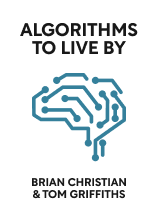

This article is an excerpt from the Shortform book guide to "Algorithms to Live By" by Brian Christian and Tom Griffiths. Shortform has the world's best summaries and analyses of books you should be reading.
Like this article? Sign up for a free trial here .
What is the “Nash equilibrium”? How do you calculate the Nash equilibrium?
One of the most important concepts in game theory is the “Nash equilibrium”—a theoretical game state in which every player is fully aware of their opponents’ strategies yet sees no need to change their own. The game becomes stable and unchanging because everyone has settled into the best possible strategy available to them. If you can calculate an equilibrium, you can predict the inevitable stable outcome of any game’s rules and incentives.
Keep reading to learn about the concept of the “Nash equilibrium” and how it is used in game theory.
The Nash Equillibrium
Game theory is the mathematical study of competition between strategic decision-makers—people, computers, or even animals. In these competitions, each player is trying to maximize their benefits, but importantly, their behavior has a direct impact on the other players. This typically results in endless strategizing and re-strategizing as each player attempts to predict what the others will do, knowing that everyone else is trying to do the same thing.
The Nash equilibrium is a key concept in game theory; if you can calculate an equilibrium, you can predict the inevitable stable outcome of any game’s rules and incentives. Christian and Griffiths assert that this function makes knowledge of Nash equilibria invaluable to policymakers of all kinds who want to bring about positive changes to the status quo.
| Nash Equilibria Are Imprecise Tools Christian and Griffiths frame the Nash equilibrium as a useful tool for policymakers. However, some argue that Nash equilibria are nearly useless for this purpose. Even Christian and Griffiths admit that most of the time, Nash equilibria are impossible to predict or calculate algorithmically, hindering their practical use. On the other hand, the concept of Nash equilibria is, at the very least, useful as a general intellectual framework, even if they can’t be precisely calculated. The concepts and vocabulary of game theory and the Nash equillibrium help decision-makers ask the right questions and glean new insights. For example, a lawmaker introducing a new policy doesn’t need to mathematically calculate its exact equilibrium—all game theory needs to do is spark the question: “Will following this policy be the optimal strategy for everyone?” If not, others will find a way around it, and the policy likely won’t function properly. In short: Vague, imprecise game theory is still useful. |
Mutually Harmful Equilibria: The Problem Game Theory Can Solve
Christian and Griffiths detail one major type of problem that game theory is good at solving: mutually harmful equilibria. When the optimal strategy for each player causes more harm to others than it helps the one using it, the system incurs a collective loss. In this case, the current Nash equilibrium hurts all players involved.
For example, bluefin tuna fishing has a mutually harmful equilibrium. This tuna makes valuable sashimi, so each fisher’s optimal strategy is to catch and sell as many tuna as possible. However, after years of overfishing, the tuna is in danger of going extinct—if it isn’t protected, it’ll disappear, harming all the fishers who used to profit from it.
| Mutually Harmful Cultures In Sapiens, Yuval Noah Harari frames human culture as a series of games with often arbitrary rules—and sometimes, mutually harmful equilibria. The goals that humans are culturally compelled to achieve may end up doing collective harm to the human race. For example, two countries who believe they need military superiority over the other engage in an arms race, spending vast amounts of their nations’ wealth on progressively more powerful weapons. In the end, the balance of power remains the same as when it began, but the countries have wasted money that could have been used to improve their citizens’ quality of life. |

———End of Preview———
Like what you just read? Read the rest of the world's best book summary and analysis of Brian Christian and Tom Griffiths's "Algorithms to Live By" at Shortform .
Here's what you'll find in our full Algorithms to Live By summary :
- How to schedule your to-do list like a computer
- Why making random decisions is sometimes the smartest thing to do
- Why you should reject the first 37% of positions in your job search






